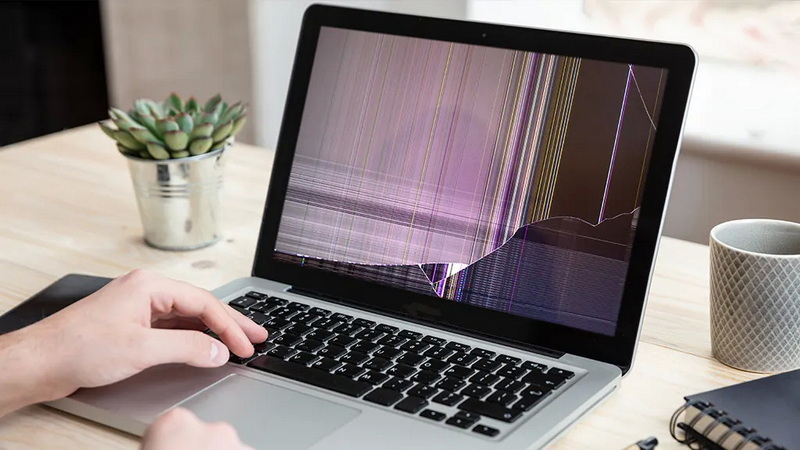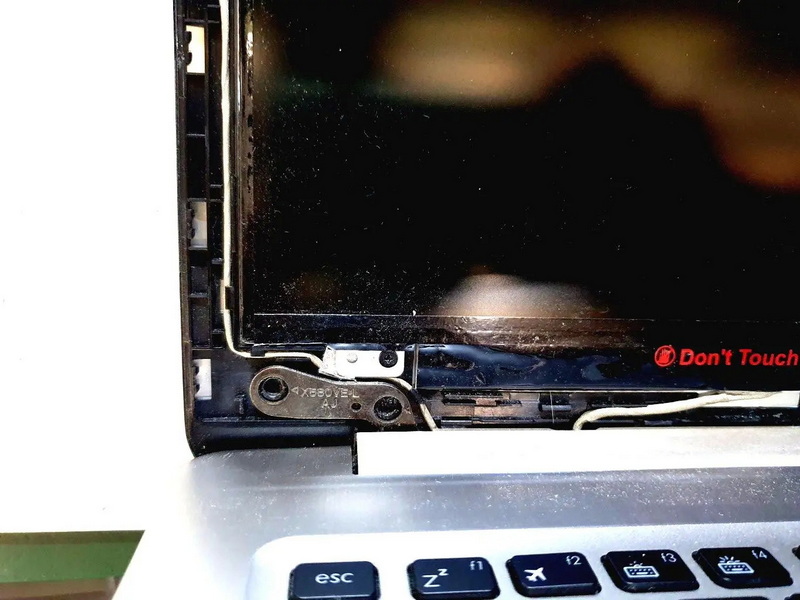Views: 222 Author: Wendy Publish Time: 2025-05-08 Origin: Site








Content Menu
● Common Causes of LCD Screen Breakage
>> Water and Moisture Exposure
>> Poor Maintenance and Handling
● The Science Behind LCD Fragility
● How to Prevent LCD Screen Damage
● What To Do If Your LCD Screen Breaks
● How to Draw a Bitmap on an LCD Screen
>> Step 1: Prepare Your Bitmap
>> Step 2: Integrate the Bitmap into Your Code
>> Tips for Drawing a Bitmap on an LCD Screen
● Advanced: Drawing Bitmaps on Color LCDs
● The Role of Bitmaps in LCD Applications
● Troubleshooting LCD Screen Issues
>> Dead Pixels
>> Ghosting and Image Retention
● How to Extend the Life of Your LCD Screen
● The Future of LCD Technology
● Frequently Asked Questions (FAQ)
>> 1. Can an LCD screen break on its own?
>> 2. How can I prevent my LCD screen from breaking?
>> 3. What should I do if my LCD screen gets wet?
>> 4. How do I know if my LCD screen needs replacement?
>> 5. How to draw a bitmap on an LCD screen for microcontroller projects?
LCD screens are everywhere-on phones, TVs, computers, and embedded devices. When your display suddenly shows cracks, dead pixels, or simply stops working, you're left wondering: How did my LCD screen break? This comprehensive guide explores the common causes of LCD failure, how to prevent them, and even provides a deep dive into how to draw a bitmap on an LCD screen for hobbyists and developers.

LCD stands for "Liquid Crystal Display". These screens use liquid crystals sandwiched between layers of glass and polarizing filters. When voltage is applied, the crystals align to allow varying amounts of light through, creating images. LCDs are popular for their clarity, energy efficiency, and versatility.
- Drops and Impacts: The most frequent cause of LCD failure is physical trauma. Even a minor drop can create cracks or cause the liquid crystals to leak, resulting in lines or black spots on the display.
- Pressure: Sitting on, leaning against, or placing heavy objects on your device can crush the delicate layers inside the screen.
- Spills and Humidity: Moisture can seep into the device, corroding internal circuits and shorting out the display.
- Condensation: Rapid temperature changes can cause condensation inside the device, leading to electrical failure.
- Overheating: Leaving your device in direct sunlight or near heat sources can warp internal components and damage the LCD.
- Freezing: Extreme cold can make the glass brittle and prone to cracking.
- Power Surges: Sudden spikes in voltage can fry the sensitive electronics that control the display.
- Internal Failures: Faulty wiring, loose connectors, or malfunctioning chips can cause the screen to malfunction or go blank.
- Weak Points: Sometimes, flaws in production create stress points that eventually crack or fail, even without obvious trauma.
- Poor Assembly: Loose connections or subpar materials can lead to early failure.
- Dirty Hands or Sharp Objects: Touching the screen with dirty fingers or using sharp objects can scratch or puncture the surface.
- Neglect: Dust, dirt, and grime can build up, affecting performance and potentially causing permanent damage.
Understanding why LCD screens are so susceptible to damage requires a closer look at their construction. An LCD consists of several ultra-thin layers: two pieces of glass or plastic, a layer of liquid crystal molecules, polarizing filters, and sometimes a backlight. The glass layers are thin to allow light to pass through and keep the device lightweight, but this also makes them vulnerable to bending and breaking.
When force is applied to the screen, the pressure can cause the glass to flex. If the pressure exceeds the glass's tolerance, it cracks. Even if the glass doesn't break, the liquid crystals can be displaced, leading to visual defects like dark spots, lines, or color distortions. The polarizing filters and backlight can also be damaged, further impairing display quality.
- Use Protective Cases and Screen Protectors: These absorb shocks and reduce the risk of scratches or cracks.
- Handle With Care: Avoid pressing hard on the screen and keep it away from sharp objects.
- Keep Dry: Don't use your device in the rain or near water, and store it in a dry place.
- Avoid Extreme Temperatures: Don't leave your device in hot cars, direct sunlight, or freezing environments.
- Regular Cleaning: Use a soft, lint-free cloth to gently clean the screen. Avoid harsh chemicals.
- Proper Power Supply: Use surge protectors and avoid plugging your device into unstable power sources.
- Cracks and Spiderwebs: Physical cracks are visible and usually mean the screen needs replacement.
- Black Spots or Lines: Indicates internal damage, often from pressure or impact.
- Dead Pixels: Small dots that remain black or discolored, often from manufacturing defects or physical trauma.
- Flickering or Color Distortion: Can result from water damage, overheating, or electrical issues.
- Complete Failure: The screen remains blank or unresponsive, often due to severe internal problems.
1. Assess the Damage: Is it just the outer glass, or is the display itself affected (e.g., dead pixels, discoloration)?
2. Turn Off the Device: Prevent further damage, especially if you suspect water exposure.
3. Contact a Professional: For most users, LCD repair or replacement is best handled by certified technicians.
4. Check Warranty: Some warranties cover accidental or manufacturing defects.
5. DIY Repairs: Only attempt if you have technical skills and are willing to risk voiding warranties.

Drawing a bitmap on an LCD screen is a common task in embedded systems, microcontroller projects, and custom display applications. Here's a step-by-step overview using the keyword how to draw a bitmap on an LCD screen:
- Create or Edit an Image: Use software like Microsoft Paint, GIMP, or Photoshop to design your graphic. Set the canvas size to match your LCD's resolution and save as a monochrome or color bitmap.
- Convert to Data Array: Use tools like LCD Assistant, Image2cpp, or online bitmap converters to transform your image into a byte array suitable for your LCD module.
- Include the Bitmap Array: Add the generated array to your project code, typically as a header file.
- Write Display Code: Use your microcontroller's graphics library to send the bitmap data to the LCD.
- Initialize the LCD: Set up your LCD according to the datasheet (contrast, orientation, etc.).
- Send Data: Use the display library's functions to draw the bitmap on the screen.
- Match Resolution: Ensure your bitmap matches the LCD's pixel dimensions for a perfect fit.
- Optimize for Memory: Monochrome bitmaps use less memory; color displays require more complex data handling.
- Test and Iterate: Preview your bitmap on the LCD and adjust as needed for clarity and positioning.
For color LCDs, the process is similar but involves more data per pixel (e.g., RGB565 format). Libraries like Adafruit's GFX for Arduino or STM32 HAL for ARM microcontrollers provide functions to draw bitmaps efficiently.
Bitmaps are used in a wide range of LCD applications, from simple icons and logos to complex user interfaces and animations. Understanding how to draw a bitmap on an LCD screen is essential for anyone working with embedded displays, as it allows for custom graphics, branding, and interactive features.
- User Interfaces: Bitmaps are often used for buttons, backgrounds, and other interface elements.
- Games and Animations: Many simple games use bitmap sprites for characters and objects.
- Branding: Company logos and product images are commonly displayed as bitmaps.
Even with careful handling, LCD screens can develop issues. Here are some common problems and how to address them:
Dead pixels are tiny spots on the screen that remain black or display the wrong color. They can result from manufacturing defects, physical trauma, or prolonged use. While a few dead pixels may not affect usability, clusters of dead pixels can be distracting.
Backlight bleeding occurs when light leaks around the edges of the screen, creating uneven brightness. This is usually a manufacturing issue but can be exacerbated by pressure or bending.
Ghosting is when a faint image remains on the screen after the content changes. This can be caused by slow response times or prolonged display of static images.
Color distortion can result from water damage, electrical issues, or aging components. If colors appear washed out or incorrect, it may indicate a deeper problem with the display.
Taking care of your LCD screen can significantly extend its lifespan. Here are some tips:
- Avoid Static Images: Prolonged display of static images can cause image retention or burn-in. Use screen savers or turn off the display when not in use.
- Adjust Brightness: High brightness levels can accelerate wear and increase the risk of backlight failure. Use the lowest comfortable brightness setting.
- Keep It Clean: Dust and dirt can scratch the screen and interfere with touch functionality. Clean regularly with a soft, dry cloth.
- Use Proper Power Management: Unstable power sources can damage the screen's electronics. Use surge protectors and avoid frequent plugging and unplugging.
LCD technology continues to evolve, with new materials and manufacturing techniques improving durability and performance. Flexible LCDs, for example, use plastic substrates instead of glass, making them more resistant to cracking. Advances in backlighting and color reproduction are also making LCDs more vibrant and energy-efficient.
However, the basic principles remain the same, and the risks of physical and electrical damage are still present. Understanding how to care for your LCD screen and how to draw a bitmap on an LCD screen will remain valuable skills for years to come.
LCD screens are essential but fragile components found in almost every modern device. Understanding how did my LCD screen break helps you avoid common pitfalls and prolong the life of your display. Whether you're a casual user or an embedded systems enthusiast, knowing how to draw a bitmap on an LCD screen opens up creative possibilities for custom graphics and interactive interfaces. With the right care, tools, and knowledge, you can both protect your screens and harness their full potential.

Yes, though rare, LCD screens can develop cracks or fail due to manufacturing defects, thermal stress, or aging components, even without direct impact.
Use protective cases, avoid exposure to water and extreme temperatures, handle gently, and clean regularly with a soft cloth.
Turn off the device immediately, avoid charging it, and seek professional repair to prevent corrosion and further damage.
If you see cracks, black spots, dead pixels, or the display is unresponsive, replacement is likely necessary. Professional diagnosis can confirm the extent of the damage.
- Create or convert your image to a bitmap array using online tools.
- Integrate the array into your code.
- Use your microcontroller's graphics library to send the bitmap data to the LCD, ensuring the resolution matches your display.